Although having a strong and reliable shelter is always important, it is especially important when dealing with winter conditions. If you’re climbing in the winter, having a reliable tent is essential due to the potential for extreme conditions at higher elevations. Tents designed for mountaineering are typically heavier to ensure structural integrity and protection from the elements when dealing with high winds, snowfall, and sub-zero temperatures.
We were extremely excited when we received the Nemo Equipment Kunai 2P tent to review. This four-season tent is designed for mountaineering conditions, yet is lighter than many options in its category. So how did the tent hold up for us? Did we sleep comfortably in winter conditions? Read our review below to found out!
Key Features:
- 4-season tent that is light enough for backpacking, yet is strong enough to use above the tree line on mountaineering trips.
- Tapered profile along with an aggressive brow pole provide protection from the wind and snow.
- Double-wall construction and large overhead vent provides great ventilation that minimizes condensation.
- Direct guy-out points pass through the fly and attach directly to the tent poles, providing a solid anchor in windy conditions.
- Tub floor that keeps water out when the ground is wet.
Tech specs:
- Minimum Weight: 3lb 15oz
- Packed Weight: 4lbs 13oz
- Floor Dimensions: 85.1’’ L x 51.2’’ W (216cm L x 130cm W)
- Peak Height: 42.2’’ (107cm)
- Vestibule area: 6.8 sq ft (0.6 sq m)
- Canopy fabric: 20D Nylon Ripstop
- Fly Fabric: 15D sil/PeU Nylon Ripstop
- Floor Fabric: 30D PeU Nylon Ripstop
- Frame: 3 Aluminum DAC Featherlite® NSL 9.6+9mm poles
Design:
The Nemo Kunai 2P is designed to be light enough for backpacking during any season, yet strong enough to endure the rough conditions that you might encounter at higher elevations when mountaineering (strong wind, blowing snow, etc). Nemo calls it “the first all-mountain tent in the category.” Traditional mountaineering tents are usually on the heavier side since they are designed with heavier fabrics and poles meant to withstand tough conditions. Nemo is able to achieve this mountaineering performance with the Kunai 2P at a lighter weight by designing the tent in a tapered profile, providing direct guy-out points which attach to the inner tent body and connect to the poles and can pass through the fly, reinforced seams, and an aggressive brow pole.
The tapered profile and direct guy-out points allow the tent to stay secure in high wind situations. The guy lines are attached to the tent body right near the snaps that connect to the poles, and can be run through the rain fly and staked into the ground.
The reinforced seams add strength to the tent body and make sure that all elements stay outside of the tent. The aggressive brow pole adds tension to the tent body providing greater structural integrity and an awning over the entryway.
There are vents at both the head and foot of the tent, which allow air to circulate, preventing condensation build up inside of the tent.
The lightweight design does not come without some sacrifices. The floor area inside the tent is really tight, and the vestibule is on the smaller side. See more details about this in the sections below.
Packability:
Not only is the Kunai 2P lightweight for a mountaineering tent, coming in at only 4lbs 13oz, it also packs down small. For a tent in general, I was impressed with how small the Kunai 2P packs down. For a mountaineering tent, I was especially impressed. I easily could have strapped it to the outside of my pack or under the pack hood, but I choose to store it inside my pack because I had the room. I stored the poles on the outside.
Setup:
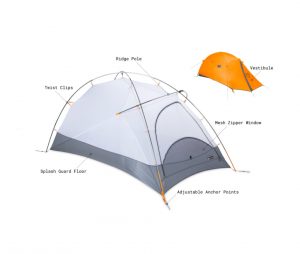 Setting up the Kunai 2P was pretty typical, with the exception of the direct guy-out points, which don’t add complexity, they are just a unique concept that I have not seen before.
Setting up the Kunai 2P was pretty typical, with the exception of the direct guy-out points, which don’t add complexity, they are just a unique concept that I have not seen before.
The pole system is made up of two poles which intersect in the middle. These poles form an “X”, where each corner goes into the grommets in the corner of the tent body. The front of the tent has a brow pole, which provides an awning over the entry way. This pole was a little difficult to insert, but after two or three tries, I was able to get it in.
Once the tent body is setup and the corners are secured with stakes, you attach the fly over the poles and slide the corner grommets into the poles at each corner. The fly has four spots that allow you to run guy lines attached to the inner-tent body through the fly.
The attached guy lines did not come with tensioners attached, which was a slight bummer.
Comfort:
As mentioned in the design section, the floor area inside of the tent is small. With two people inside the tent, each person will most likely be touching the tent wall (unless you really snuggle up together). In colder situations, it might be a good thing being close to your partner (extra body warmth), but I can’t imagine this being pleasant on warmer nights during the other 3 seasons.
The vestibule is rather small, and my pack and boots took up most of the room. I stored some of my other gear outside the vestibule (i.e. snowshoes). If you want to make sure you have an easy way to get in and out of the single entryway, storing gear for two people in the vestibule is going to be difficult.
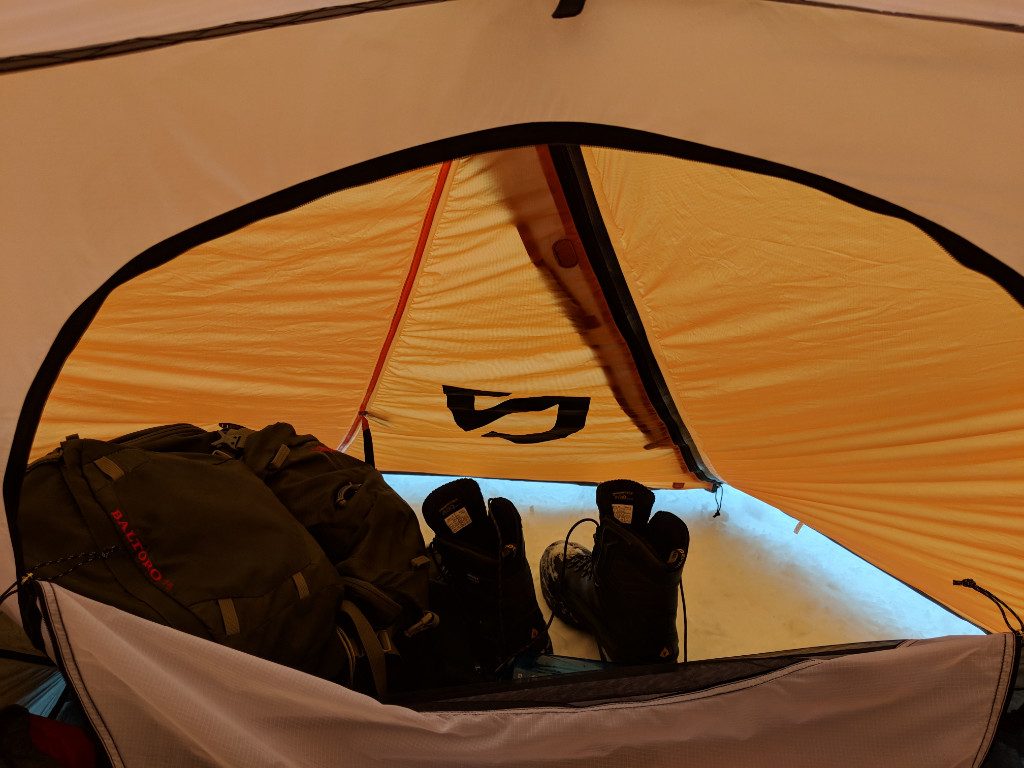
The vents the located at the top of the tent and the entryway provided great air circulation, and I woke up to minimal condensation in the morning. I was quite impressed with the low level of condensation.
Value:
With an MSRP of $499.95, the Kunai 2P is right in the middle / lower middle price range for a mountaineering capable tent. Although it might not offer all of the bells and whistles of some of the other tents in its category, it is a cheaper and lighter option for those that do not need a ton of space or a large vestibule.
Buy Now: $499.95 or to learn more, go to: NemoEquipment.com
- Lightweight for a mountaineering tent
- Packs down well
- Built strong and will keep you out of the elements when conditions are rough
- Small interior space
- Small vestibule
- Guy lines could use tensioners

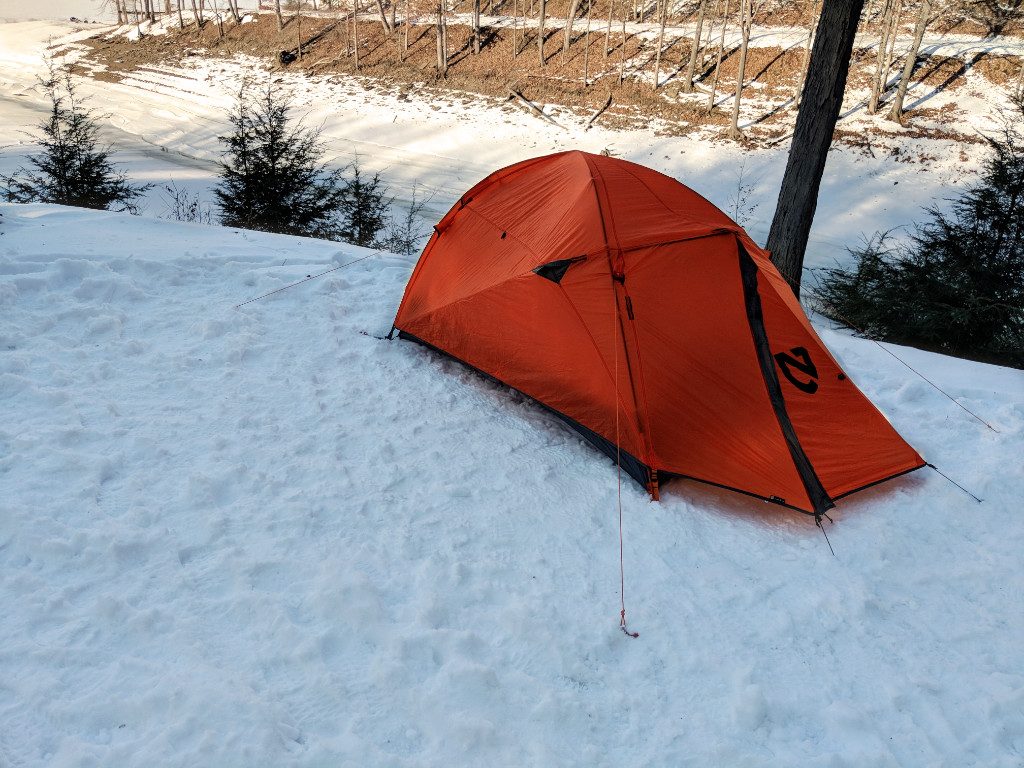
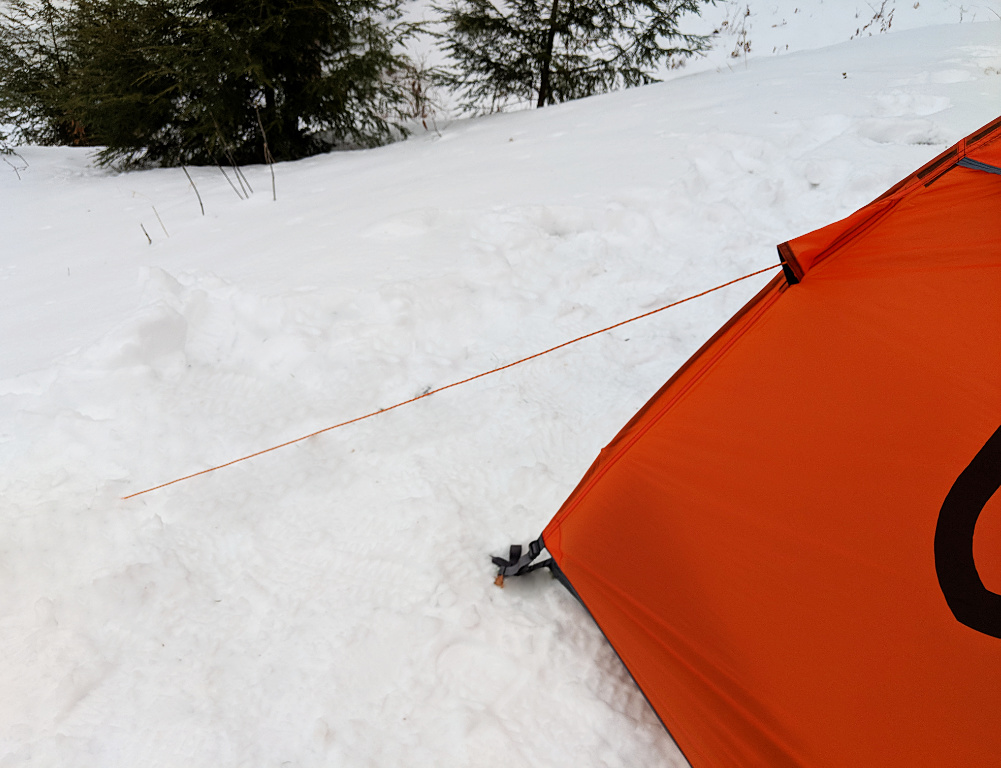
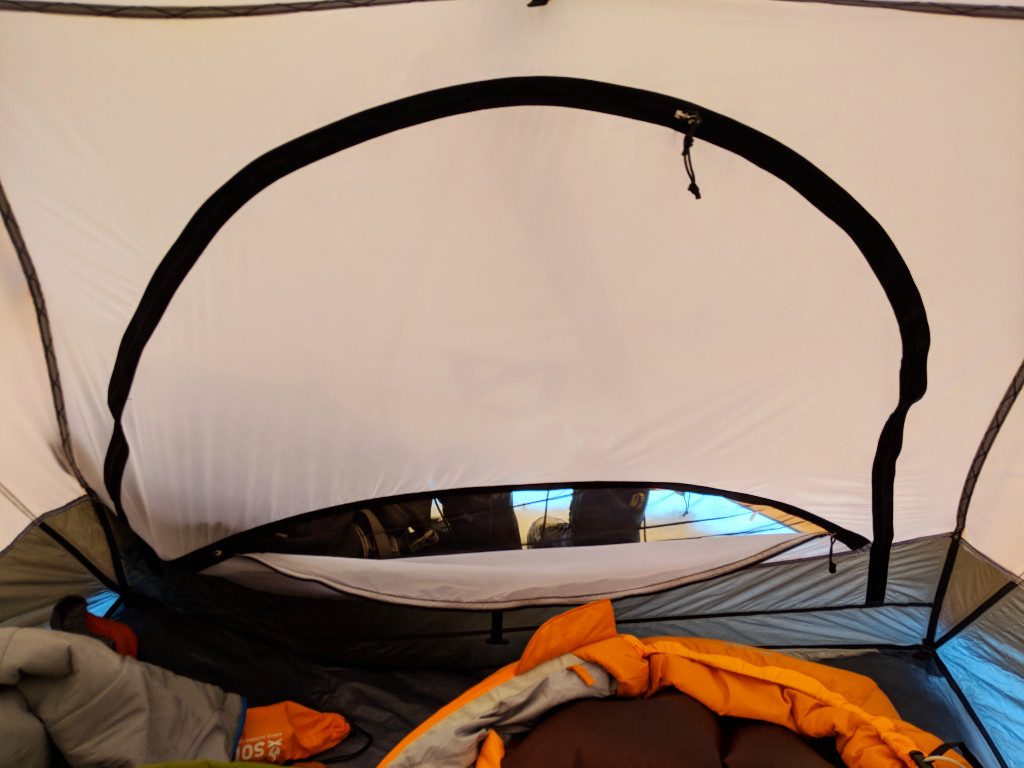
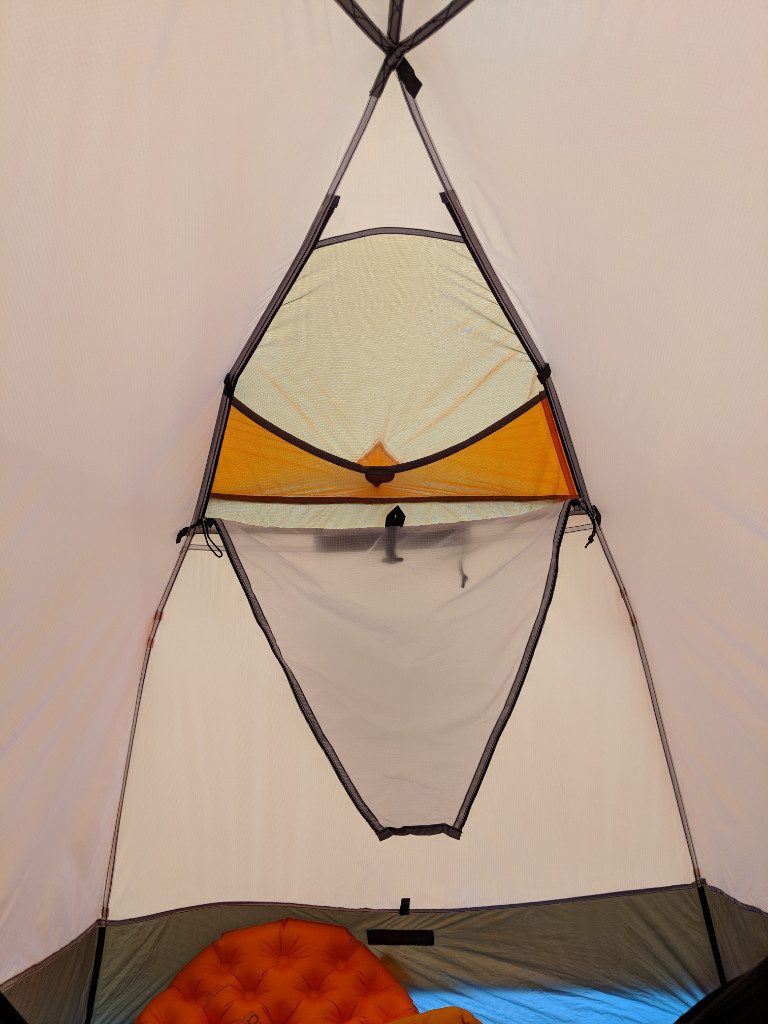
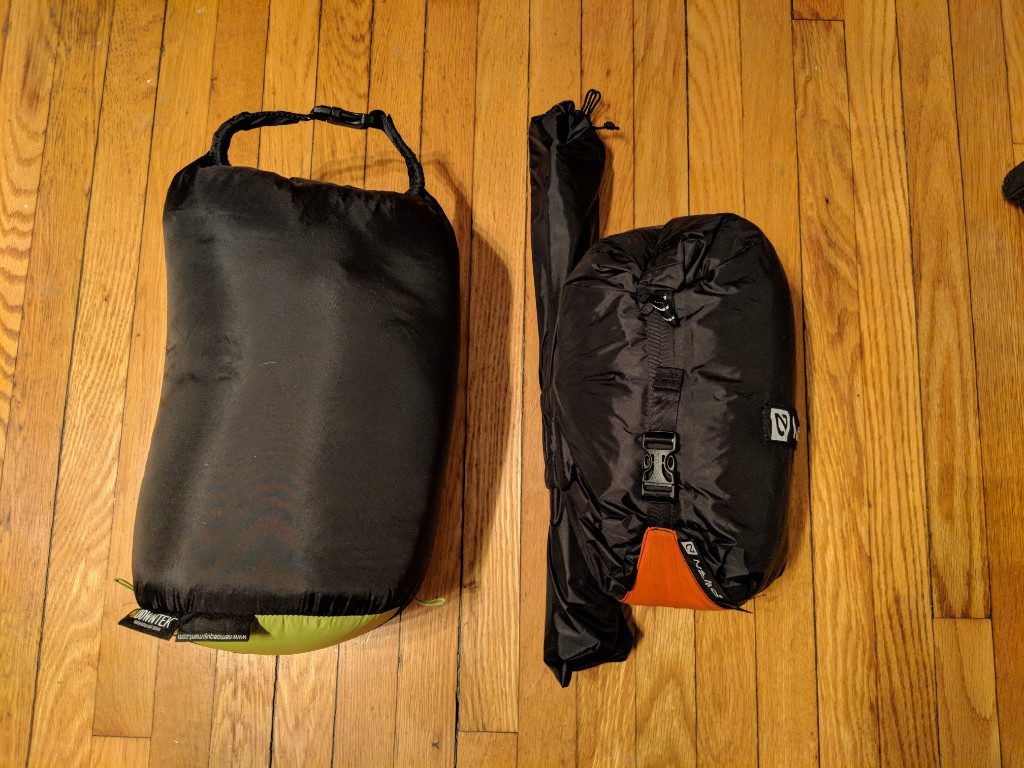
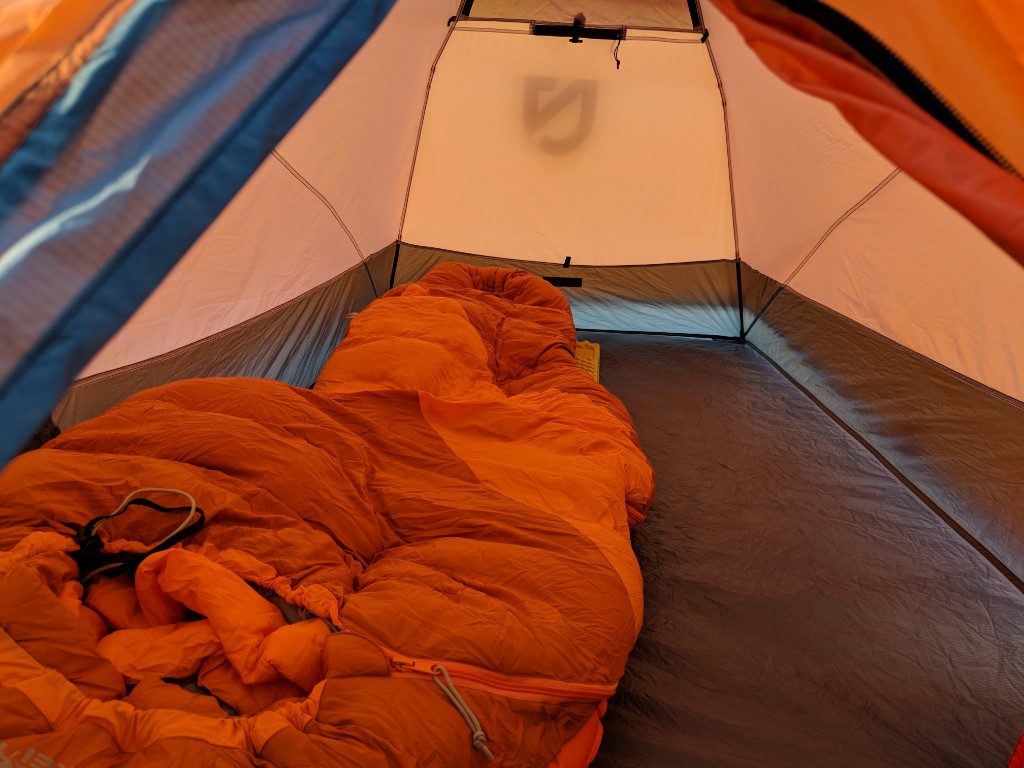
Great review. I am 6’7” and looking at this tent for just myself. Is this big enough for a 10 day trip? I want to keep my pack bow and boots out of the elements as well.